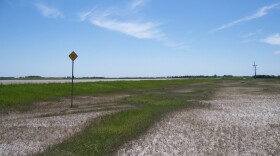If you like watching falling stars, you are in for a treat. We are already into one of the best meteor showers, and with a little luck, it could turn out to be the best show of the year.
The Perseids Meteor Shower began on July 17 and will run through August 24 with the peak viewing period coming up on the night of August 12th and early morning hours of the 13th with perhaps up to 60 meteors or more per hour. There is a new moon on August 8, and the moon will be waxing toward a crescent moon which will set during the early evening hours during the peak viewing period. That is all good news for viewers! Now all we need is a clear sky!
Most meteor showers are associated with comets, and the Perseids are caused by the comet Swift-Tuttle. It is one of our oldest known comets, with records dating back to China around 26 AD. But it was not until 1862 that Lewis Swift and Horace Parnell Tuttle independently discovered the comet. It has an orbit that brought it near the earth in 1862 and then again in 1992. The next pass through will not come until the year 2126.
Comets, of course, are mixtures of ice, rock, and dust. They are often described as dirty snowballs a few miles in diameter. When comets pass near the sun, the heat causes the comet to shed ice and particles. These mostly sand-sized pieces of ice and rock create a “debris field” in outer space. So every year about this time, when the earth passes through the debris field of comet Swift-Tuttle, the pieces collide with the atmosphere and become glowing hot. Viewed from earth, they are “falling stars” or more accurately meteors.
A lot of “falling stars” make a meteor shower. There are eight major meteor showers associated with comets each year. Even though the meteors in this shower originate from the comet Swift-Tuttle, the meteor shower is called the Perseids because the meteors appear to be radiating out of the constellation Perseus. We will see the Draconids and Orionids in October, but the Draconids are considered a minor shower, and a full moon during the peak viewing period of the Orionids will be a problem. So, get out and enjoy the Perseids!




